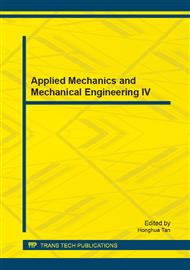p.100
p.106
p.115
p.119
p.125
p.130
p.136
p.144
p.149
Fault Diagnosis of VCM Type AF Actuator Module for Phone Camera by Vibration Analysis
Abstract:
A voice coil motor (VCM) is the module to realize auto-focus function in mobile devices such as smartphones and tablet PCs. The VCM has very complicated structure in a small dimension. There are many faults like large hysteresis, short movement range and improper starting current. However, VCM makers are struggling to point out the cause of faults. Break-down analysis is also difficult to apply because main VCM parts are tightly bonded together and easily deformable during disassembly processes. Therefore, we proposed the novel diagnosis method of VCM faults without breaking it. Our method expected to classify the causes of faults by analyzing vibration characteristics of VCMs. Frequency spectrum characteristics and fast Fourier transform (FFT) spectrum analysis are performed. Experimental results revealed that natural frequency shifts shown for NG samples compare to good ones and the fluctuation of magnitude over natural frequency range appeared. Also, sidebands are observed in adjacent of integer multiple harmonic peaks for NG sample. We can find clear vibration characteristic differences caused by VCM defects. Therefore, the causes of defects expected to be classified and corresponding actions can be done in the production line that lead to high productivity of high quality VCM.
Info:
Periodical:
Pages:
125-129
Citation:
Online since:
October 2013
Authors:
Price:
Сopyright:
© 2014 Trans Tech Publications Ltd. All Rights Reserved
Share:
Citation:


